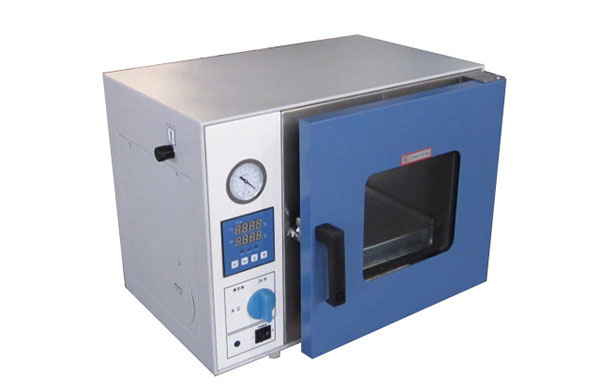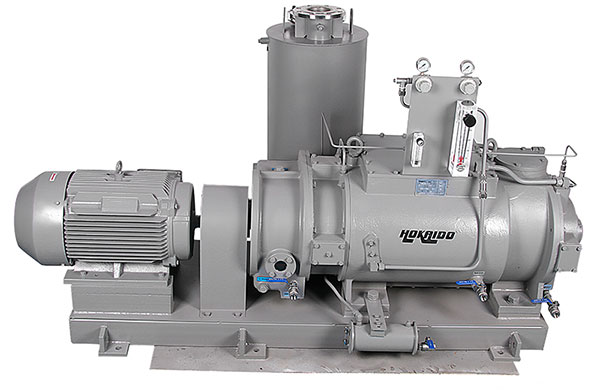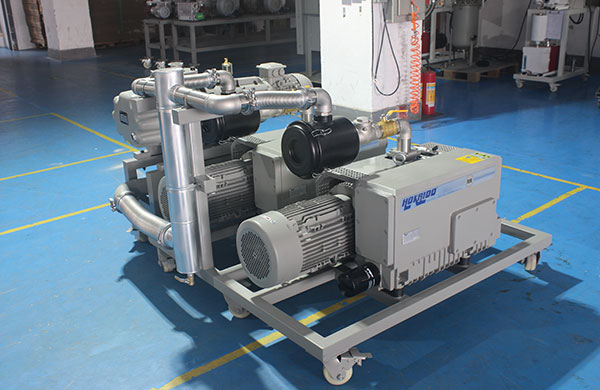Vacuum drying, also known as analytical drying, decompression drying, is a kind of material placed under vacuum negative pressure conditions, and appropriately through heating to reach the boiling point in the negative pressure state or by cooling so that the material solidified through the melting point to dry the material (i.e., vacuum freeze drying, vacuum drying a) drying method. In the sense of environmental protection, vacuum drying is also known as "green drying".

The principle of vacuum drying
Under normal pressure of various heating and drying methods, because the material is heated, its color, aroma, taste and nutrients will be subject to a certain degree of loss. If the vacuum drying method is used, the loss of quality can be reduced by isolating the air under negative pressure, which makes some materials prone to chemical changes such as oxidation in the drying process better maintain their original properties.

For example, when applied in the field of food: vacuum drying is to be dry food materials placed in a closed drying room, vacuum system vacuum at the same time, the dry material is properly continuously heated, so that the moisture inside the material through pressure difference or concentration difference spread to the surface, water molecules in the material surface to obtain sufficient kinetic energy, after overcoming the attraction between molecules, escape to the vacuum chamber of low-pressure air, so that the vacuum pump to remove.
The characteristics of vacuum drying
1. Vacuum drying is suitable for thermally sensitive materials, or materials that are easily oxidized at high temperatures, or materials that are valuable or toxic and incendiary.
2. The vacuum degree and heating temperature range used in drying are large and versatile.
3. Dry temperature is low, no overheating phenomenon, moisture is easy to evaporate, drying time is short,
4. Reduce the exposure of materials to air, can avoid pollution or oxidation deterioration.
5. Drying products can form a porous structure, brittle sponge-like, easy to crush, has better solubility, rehydration, good color and taste.
6. Volatile liquids can be recycled.

In the vacuum drying process, the pressure in the drying room is always lower than the atmospheric pressure, the number of gas molecules is small, the density is low, the oxygen content is low, so it can dry materials that are prone to oxidation and deterioration, flammable and explosive dangerous goods, etc. For drugs, food and biological products can play a certain role in sterilization, can reduce the chance of material germination or inhibit the growth of certain bacteria.
Applications for vacuum drying
Vacuum drying technology has been widely used in medicine, chemical, food, electronics, Traditional Chinese medicine and other industries of thermal material drying. For example, in the production of health food, especially natural products of the extract drying, because many of the natural products do not tolerate high temperature and widely used vacuum drying.

Common vacuum drying equipment is: vacuum drying box, continuous vacuum drying equipment. The common vacuum drying box consists of a condensing system consisting of a drying cabinet, condenser and condensate collector and a vacuum pump.
As the core equipment in vacuum drying equipment - vacuum pump, in the field of vacuum drying plays an important role, to a certain extent, vacuum pump will directly affect the use of vacuum drying tank. Therefore, in the vacuum pump selection should be particularly careful.
Application of Hokaido vacuum equipment in vacuum drying equipment
Hokaido vacuum pumps and vacuum systems are widely used in vacuum drying equipment. Vacuum pump has a single-stage rotary-chip vacuum pump, double-stage rotary-chip vacuum pump, Rotts pump, dry screw pump, vacuum system has a single-stage Rotts unit, two-stage Rotts unit, combined with operating conditions to choose suitable for your vacuum pump products. For example, in the field of lithium battery drying, more vacuum pumps are dry pumps, single-stage pumps and two-stage pumps.




For example, when the rotary chip vacuum pump is applied to vacuum drying, it can reduce the moisture content of the material by moisturizing through the gap, so that the solution such as water in the material can obtain sufficient kinetic energy to get off the surface of the material. Vacuum drying because in the vacuum state created by the rotary chip vacuum pump (i.e. negative pressure state) can isolate the air so that some of the chemical changes such as oxidation in the drying process to better maintain the original characteristics, but also by injecting inert gas through the rotary vacuum pump vacuum way to better protect the material.
Contact us to learn more about solutions and offers for vacuum drying, vacuum equipment.


